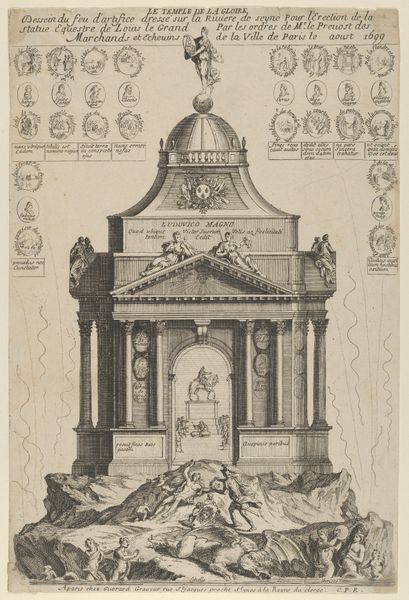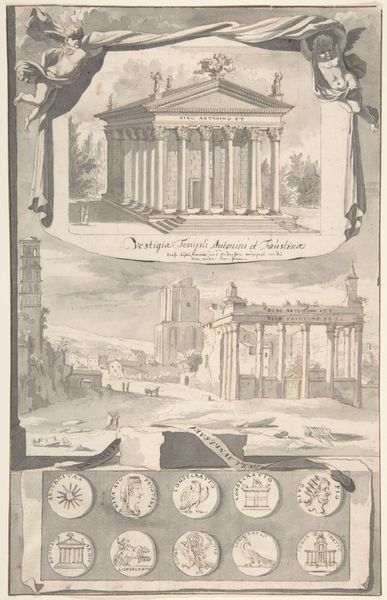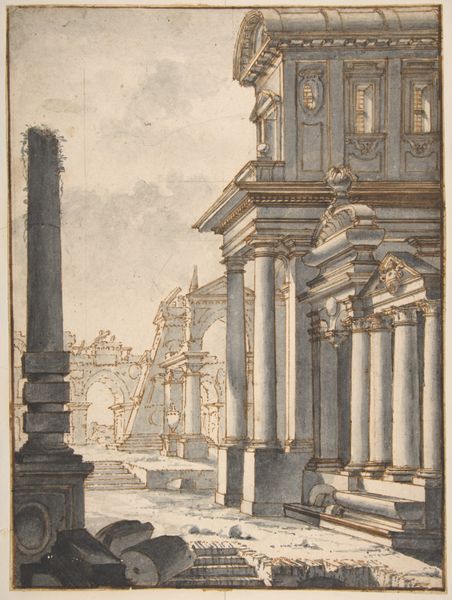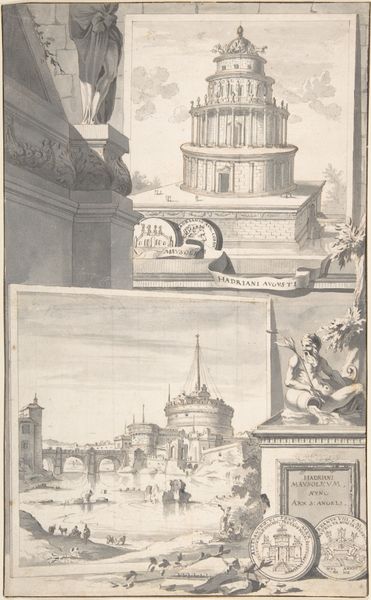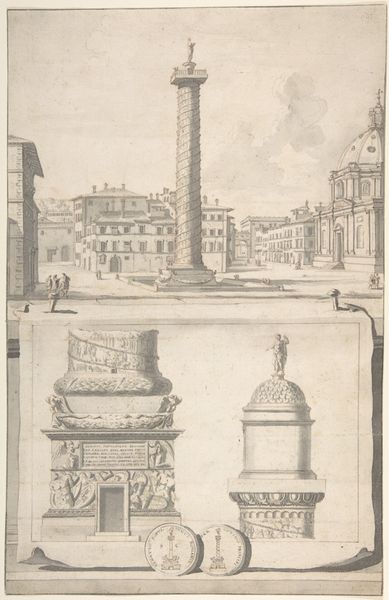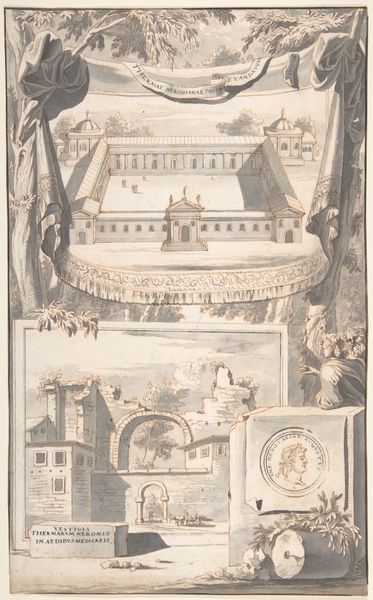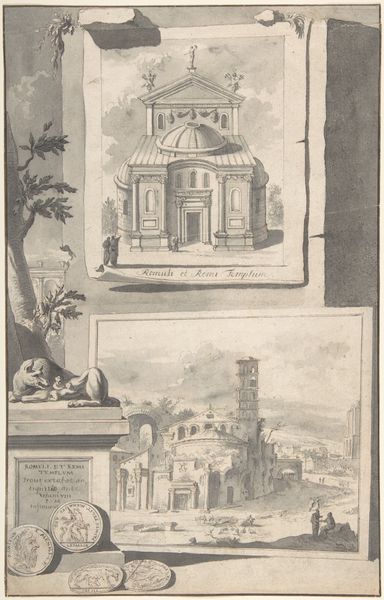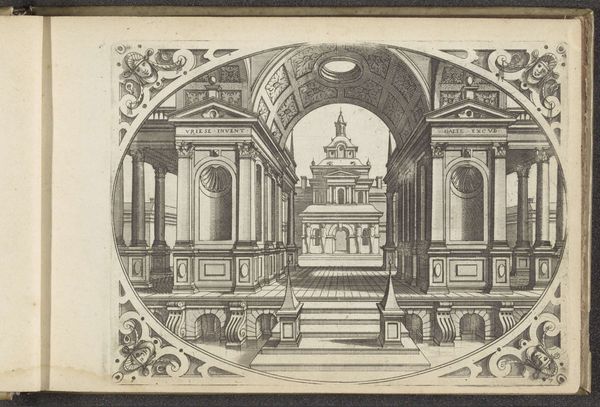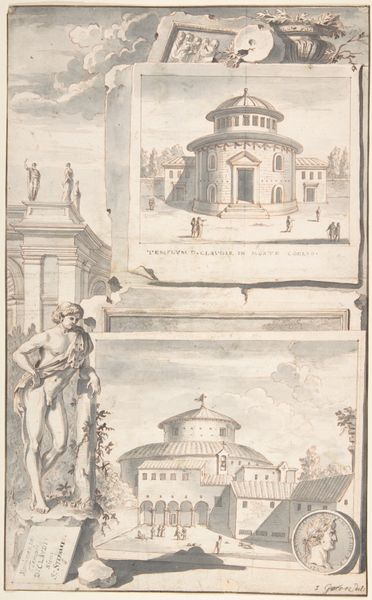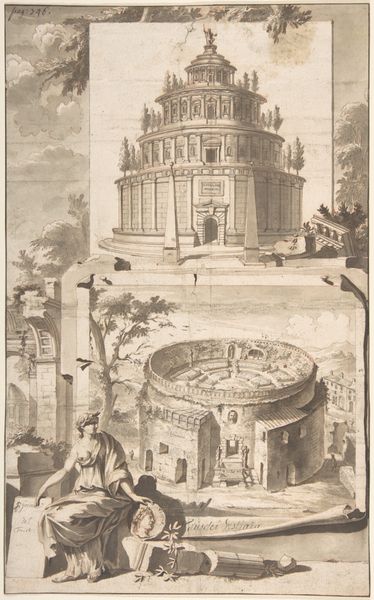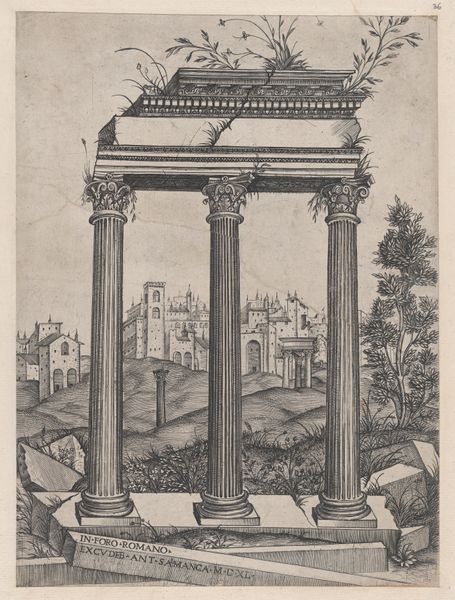
A Reconstuction of the Pantheon (above) and a View of its Appearance Around 1700 (below) 1690 - 1704
0:00
0:00
drawing, print, architecture
#
drawing
# print
#
cityscape
#
history-painting
#
italian-renaissance
#
italy
#
watercolor
#
architecture
Dimensions: 13 1/16 x 8 5/16 in. (33.2 x 21.1 cm)
Copyright: Public Domain
Jan Goeree made this drawing with pen and brown and gray ink, with gray wash, over graphite around 1700. The print shows two versions of the Pantheon in Rome. The top half shows how it looked when first built during the Roman Empire. The bottom depicts the Pantheon as it appeared around 1700, after centuries of modifications. As an artist working in the Dutch Republic, Goeree was part of a culture that was fascinated by classical antiquity, seeing it as a source of wisdom and artistic inspiration. At the time, the Dutch Republic’s cultural institutions were less developed than those in other parts of Europe. The Dutch Golden Age in the 17th century was characterised by the influence of the wealthy merchant class, and the art market catered to this class. The classical imagery in Goeree's drawing would have appealed to elite patrons, who wanted to associate themselves with the grandeur and authority of ancient Rome. Historians use many resources to understand the context of artworks like this: books, prints, drawings, and archival documents, all help to understand the conditions that made the work possible. The meaning of any work of art depends on the social and institutional context of its creation.
Comments
No comments
Be the first to comment and join the conversation on the ultimate creative platform.


